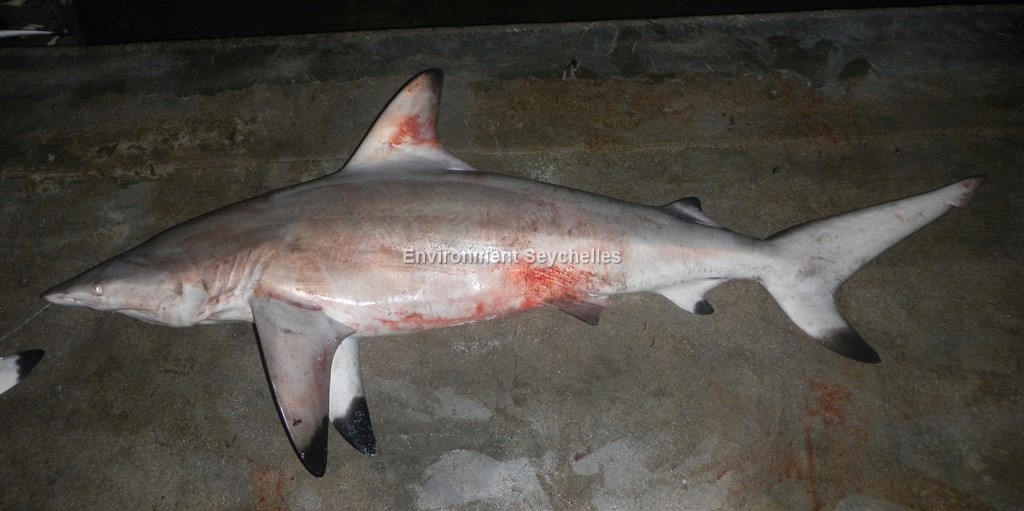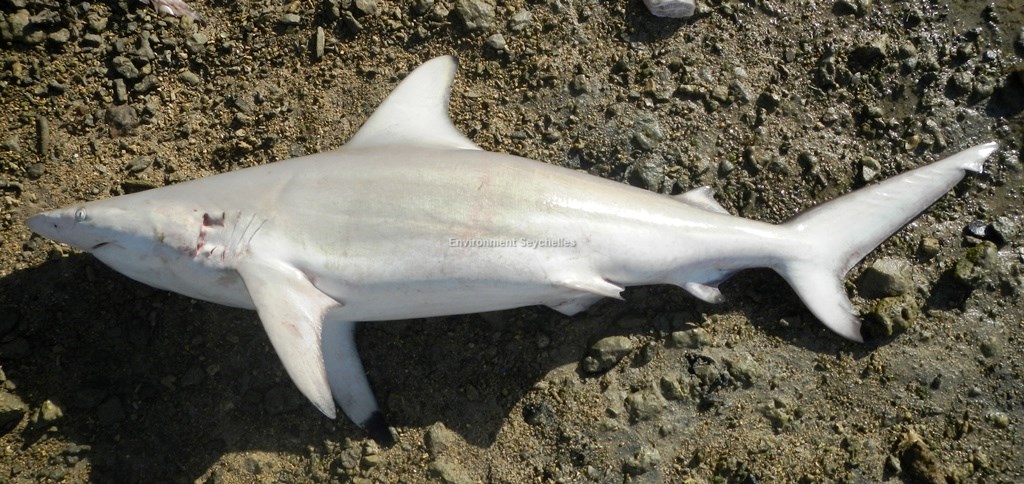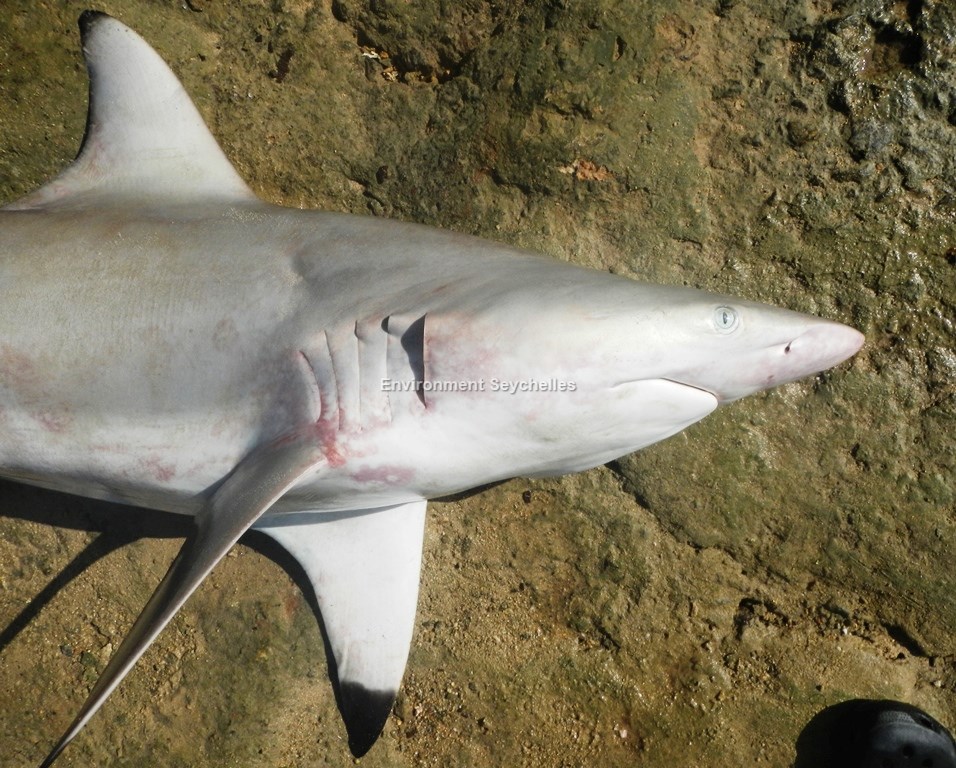Description:
Mid-sized stout shark with long pointed snout, colour can vary quite significantly from dove grey through Dark grey to brown-grey on back, white or cream below,
conspicuous white band on flanks. Fin tips usually black on pectorals, dorsals and ventral caudal lobe, pelvic and sometimes the anal fin. Large individuals may
have much less pronounced or even lack black fin tips.
Fins: D1 large, falcate (trailing edge curving anteriorly from fin apex) with black tip and/or black edge on narrowly round apex. Origin above pectoral fin
insertion to near the pectoral rear free tip. D2 relatively high with black tip. Origin over or slightly anterior to anal fin. No interdorsal ridge. Pectorals
large, falcate with narrowly rounded to pointed black tips. Pelvic fins with black tip. In Seychelles C. limbatus often displays a dark spot towards the end of
the pelvic fin rather than a black tip. Anal plain or black-tipped. Caudal fin dorsal lobe black-edged, ventral lobe black-tipped.
Head: Long pointed snout, small circular eyes, long gill slits, anterior nasal flaps short, triangular pointed lobes. Upper labial furrows short and inconspicuous.
Size:
Born 38-72cm TL. Mature: Male 135-180cm TL, Female 120-190cm, Maximum 255cm TL.
Habitat and Ecology:
Viviparous 1-10 pups per litter (typically 4-7) after 10-12 month gestation period. Insular and continental shelves and adjacent waters. Commonly occurs in loose
aggregations. Eats teleosts, cephalopods and crustaceans.
Fishery Status:
This species is not protected. It is however illegal to fish for sharks with nets (Fisheries Act, Reg 16.c). It is subject to hook and line, short anchored long
line and illegal net fishing. Juveniles and sub-adults are a common component of the artisanal catch. Adults are also caught but much less often.
Notes:
Differentiation from C. brevipinna can be problematic due to variations in colouration of both species. Key distinguishing characteristics are the respective shapes
of the D1 fin, the short pectoral fins and the long upper labial furrow of C. brevipinna.
The Creole name “nennen pwent” is also applied to C. brevipinna and C. sorrah as in general the fishers do not distinguish between the three species.
References:
Burgess, H. G. & Branstetter, S. (2009). Carcharhinus limbatus. The IUCN Red List 2009: e.T3851A10124862. http://dx.doi.org/10.2305/IUCN.UK.2009-2.RLTS.T3851A10124862.en. (26/05/19).
Ebert, D.A. et al (2013). Sharks of the World – A fully illustrated guide. Wild Nature press ISBN 978-0-9573946-0-5
Fisheries Act (2014). Prohibition of net fishing of sharks, Reg. 16c of 1st August 1998. (Carried over from the 1986 Fisheries Act as per Fisheries Act 2014 para 79: Savings and Transitional provisions).
Froese, R. and D. Pauly. Eds. (2018). FishBase. https://www.fishbase.se/summary/874 (26/05/19).
Nevill, J.E.G. et al (2015). An identification guide for the sharks of the Seychelles Artisanal Fishery.
Rigby, C.L. et al (2021). Carcharhinus limbatus. The IUCN Red List 2021: e.T3851A2870736. https://dx.doi.org/10.2305/IUCN.UK.2021-2.RLTS.T3851A2870736.en. (05/10/21).
Citation:
Nevill, J.E.G. (2019). Carcharhinus limbatus, Blacktip shark. Seychelles Seatizens. www.seatizens.sc. https://seatizens.sc/species/carcharhinus-limbatus-muller-henle-1839/ (Updated 05/10/21).




高級 ダッチワイフit was very good of her to beat time to the song.When the trays re-appeared with biscuits and wine,
power,wealth,美人 セックス
being of the Present,オナドールtransferre a future right,